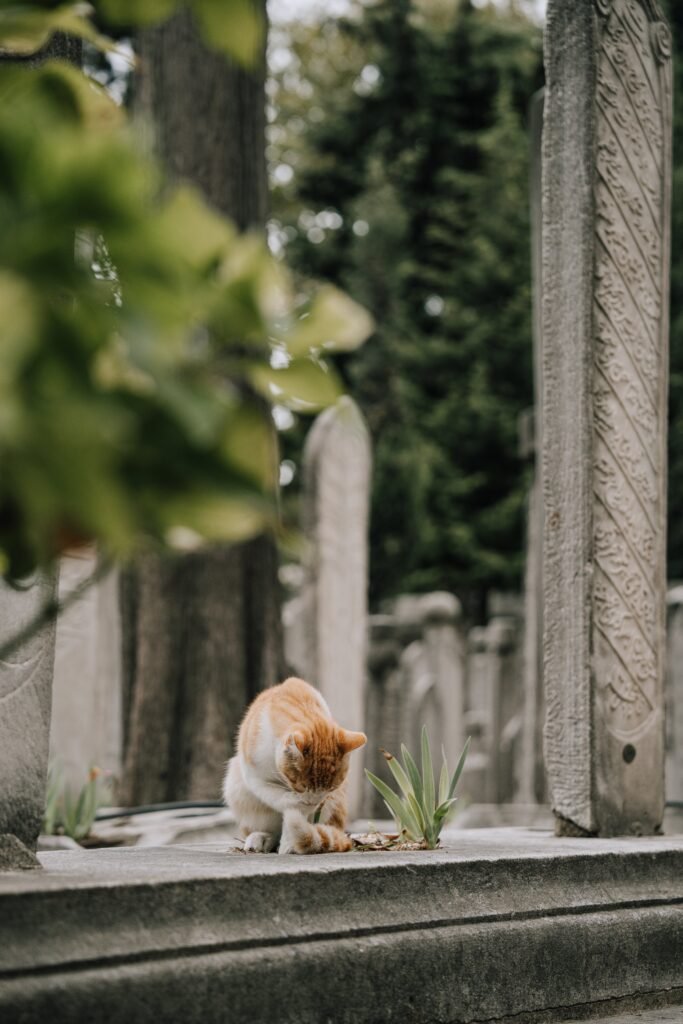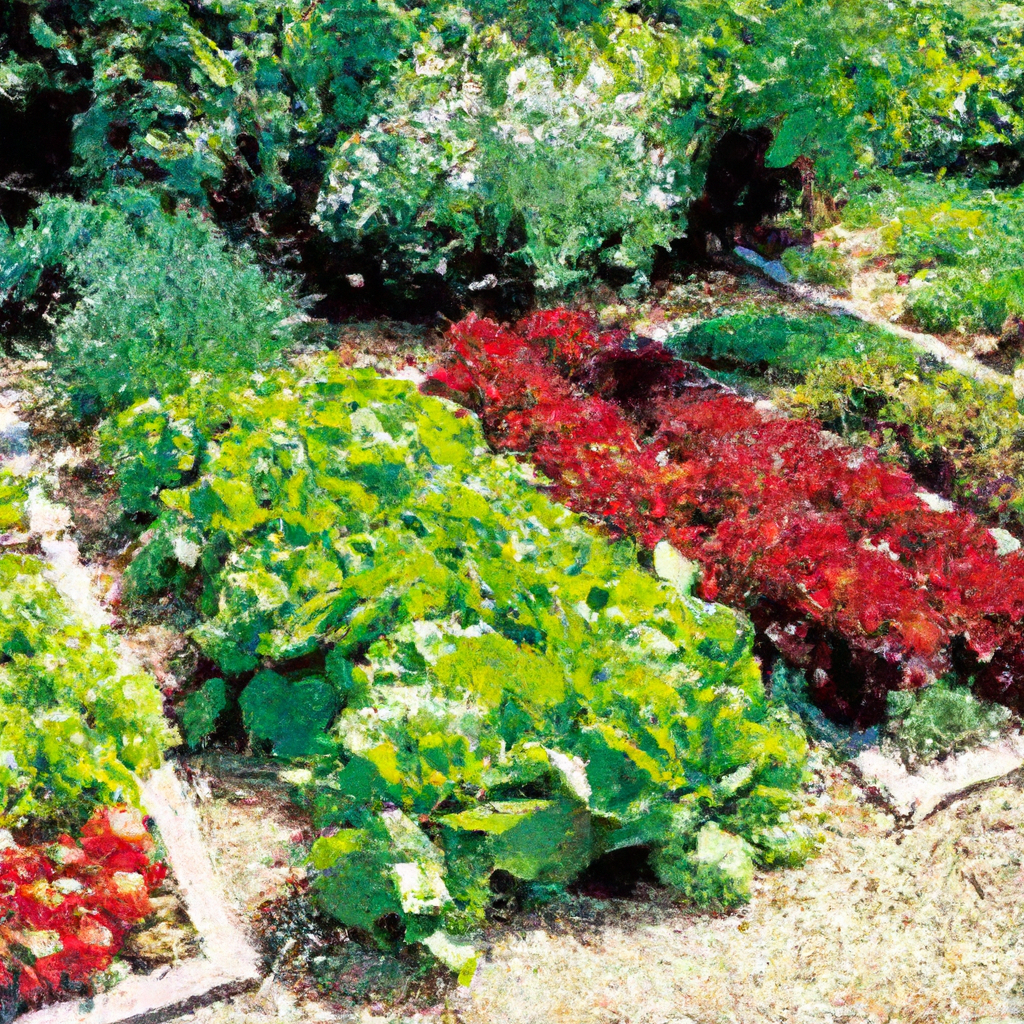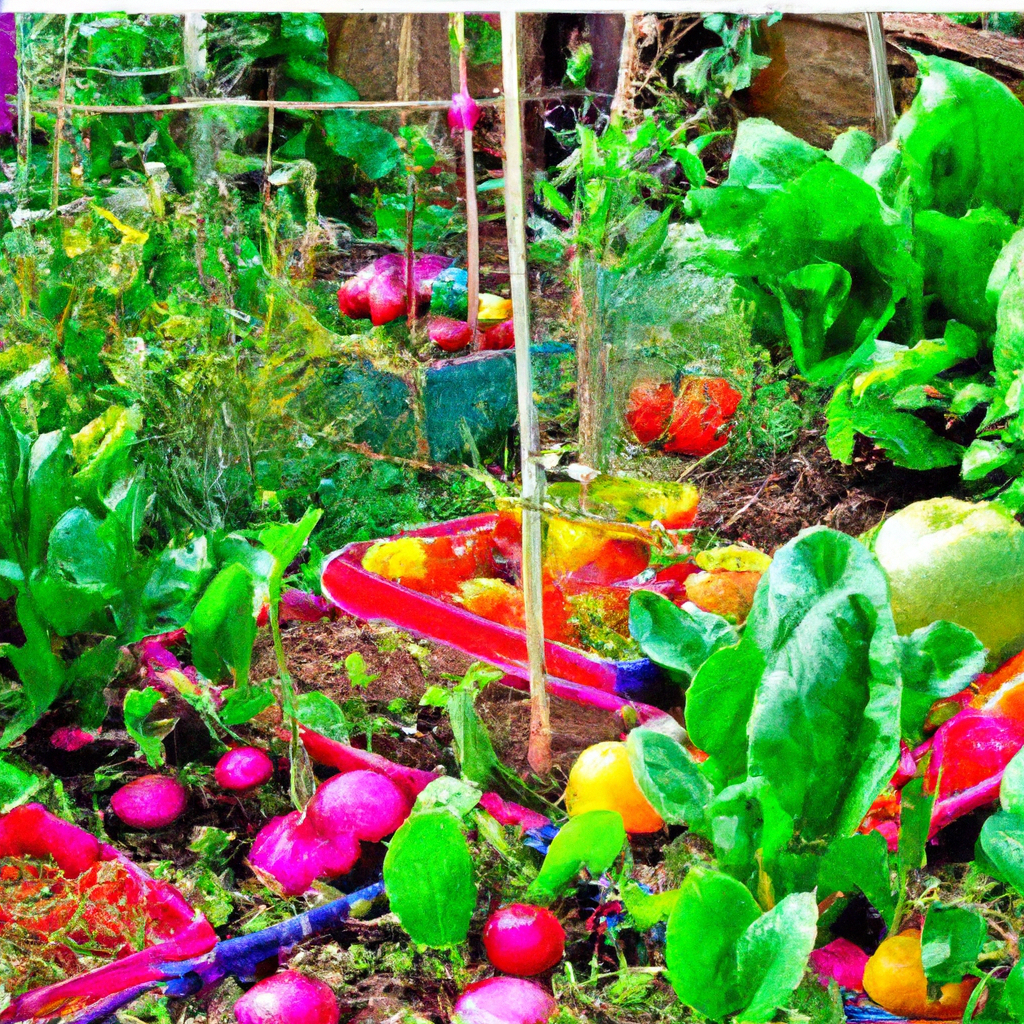
Container gardening is a fantastic way to bring a touch of greenery into your living space, whether you have a large garden or a tiny balcony. From blooming flowers to fresh herbs and even small vegetables, the possibilities are endless. But where do you start? In this article, we’ll share some quick and easy tips for successful container gardening that will have you growing a thriving garden in no time. So grab your gardening gloves and let’s get started! Container Gardening has become increasingly popular among gardening enthusiasts. Whether you live in an apartment with limited outdoor space or simply want to add some greenery to your patio or balcony, container gardening offers a convenient and versatile solution. However, to ensure the success of your container garden, there are several important factors to consider. From choosing the right containers and soil to selecting suitable plants and providing proper care, this comprehensive guide will walk you through each step to help you create a thriving container garden.

Choosing the Right Containers
When it comes to choosing a container for your plants, there are a few key factors to keep in mind to ensure their health and growth. Firstly, consider the size of the plant. Larger plants will require bigger containers to accommodate their root systems adequately. On the other hand, smaller plants can thrive in more compact containers.
Another crucial aspect to consider is drainage. Choose containers with drainage holes at the bottom to prevent water from pooling and causing root rot. Proper drainage is essential for plant health, as it allows excess water to flow out of the container, preventing waterlogged soil.
The material of the container is also important. From terracotta to plastic and wood, there is a wide range of materials to choose from. Each has its own advantages and considerations. For example, terracotta containers are known for their porous nature, which helps regulate moisture levels, but they can be prone to cracking in freezing temperatures. Plastic containers are lightweight and durable but may not provide the same breathability as terracotta.
Lastly, ensure that the container you choose is large enough to accommodate the plant’s growth. As plants grow, they will require more space for their roots and foliage. Choosing a container that allows for adequate growth is crucial to prevent root-bound plants and promote healthy development.
Selecting the Right Soil
Choosing the right soil for your container garden is essential for providing the necessary nutrients and moisture retention. A well-draining potting mix is key to prevent waterlogged soil and root rot. Potting mixes specifically designed for container gardening are readily available and provide excellent drainage.
Consider adding compost to your potting mix to enrich the soil with nutrients. Compost is an excellent source of organic matter that helps promote healthy plant growth. It improves soil structure and fertility, providing the necessary components for robust plant development.
Avoid using garden soil in your containers, as it tends to be heavy and may contain weed seeds, pests, or diseases. Garden soil also tends to compact more easily in containers, hindering drainage and root growth.
Perlite or vermiculite can also be added to the potting mix to enhance drainage. These additives help create air pockets in the soil, preventing water from accumulating around the roots.
Lastly, consider the pH levels of the soil. Different plants thrive in different pH ranges. Some prefer acidic soil, while others prefer more alkaline conditions. Choosing soil with appropriate pH levels for your specific plants will ensure their optimal growth and health.

Choosing the Right Plants
Choosing the right plants for your container garden is crucial for their survival and success. Before selecting plants, consider the amount of sunlight available in your gardening space. Some plants thrive in full sun, while others prefer partial shade. Understanding the light requirements of your chosen plants will help ensure they receive the appropriate amount of sunlight for their growth.
Not all plants are suitable for container gardening. Some plants have extensive root systems or require more space to grow than others. Choose plants that are known for their adaptability to container gardening and root growth.
Consider the growth habit and size of the plants you select. Some plants, such as bushy herbs or trailing vines, are excellent choices for containers. On the other hand, plants with extensive root systems or vertical growth habits may outgrow their containers quickly.
Mixing different types of plants in your containers can create an appealing display. Combining plants with different textures, colors, and heights adds visual interest to your container garden.
Finally, consider plants that thrive in your climate. Some plants are better suited for warmer climates, while others are more tolerant of colder temperatures. Choosing plants that are well-suited to your climate will increase their chances of thriving in your container garden.
Providing Adequate Watering
Proper watering is vital for the health and growth of container plants. To ensure you provide adequate hydration, monitor the moisture levels in the soil regularly. Stick your finger about an inch into the soil, and if it feels dry, it’s time to water your plants.
When watering, make sure to water deeply and thoroughly. This ensures that the water reaches the roots and encourages downward growth. Shallow watering may result in shallow root growth, making plants more susceptible to drought.
Avoid overwatering, as it can lead to root rot and other fungal diseases. Allow the top inch of the soil to dry out slightly between waterings. If the container has drainage holes, water until it flows out from the bottom, ensuring that excess water is drained away.
Self-watering containers can be a convenient option for maintaining consistent moisture levels. These containers have a water reservoir at the bottom that the plants can draw from as needed. They provide a self-regulating system that prevents overwatering and under watering.
During hot weather, plants may require extra water to compensate for increased evaporation. Monitor your plants closely and provide additional water if needed to prevent dehydration.

Fertilizing Container Plants
Container plants rely on consistent fertilization to receive the necessary nutrients for healthy growth. Choosing a suitable fertilizer is crucial to meet the nutrient requirements of your plants. There are various types of fertilizers available, including liquid, granular, and organic options.
When using fertilizers, always follow the manufacturer’s instructions for application rates and frequency. Over-fertilization can lead to nutrient burn, which can damage or even kill your plants.
Timing is also essential when applying fertilizers. Different plants have different nutritional needs throughout the growing season. Fertilize your plants at the appropriate time to ensure they receive the right nutrients at the right stage of growth.
Avoid over-fertilization, as excessive nutrients can accumulate in the soil and cause nutrient imbalances. Regularly monitor your plants for signs of nutrient deficiencies or excesses and adjust your fertilization routine accordingly.
Consider using slow-release fertilizers, which gradually release nutrients over an extended period. These fertilizers provide a steady supply of nutrients to your plants, reducing the frequency of applications.
Managing Pests and Diseases
Plant pests and diseases can significantly impact the health and growth of your container garden. Regularly inspect your plants for signs of pests or diseases, such as wilting leaves, spots, or chewed foliage. Early detection is crucial for effective management.
Remove any infested or diseased plants immediately to prevent the spread of pests and diseases to other plants in your container garden. Quarantine affected plants to minimize the risk of further infestations.
When managing pests, opt for organic pest control methods whenever possible. Natural solutions such as neem oil, insecticidal soap, or companion planting can help deter pests without harming beneficial insects or contaminating the environment.
Consider companion planting to naturally repel pests. Some plants, when grown together, can help protect each other from common pests. For example, marigolds are known to repel aphids and nematodes when planted near other susceptible plants.
Avoid overcrowding your plants in your containers, as it can promote the spread of diseases. Provide adequate spacing between plants to ensure proper air circulation and minimize the risk of fungal infections.

Pruning and Maintenance
Regular pruning and maintenance are essential for keeping your container garden healthy and visually appealing. Pruning helps maintain the shape of your plants and promotes bushier growth.
Remove dead or yellowing leaves regularly to prevent the onset of diseases and maintain the overall health of your plants. These leaves can also attract pests, so it’s essential to remove them promptly.
Pinching back your plants can encourage branching, resulting in a fuller and more compact growth habit. It helps to pinch off the tips of young shoots to promote lateral growth and prevent plants from becoming leggy.
Tall or climbing plants may require support to keep them upright and prevent them from toppling over. Use stakes or trellises to provide the necessary support and ensure that your plants grow in the desired direction.
Clean and disinfect your containers regularly to prevent the buildup of diseases. After removing plants, wash the containers with a mixture of mild soap and water. Rinse thoroughly and apply a diluted bleach solution to disinfect. This helps ensure that any remaining pathogens or pests are eliminated before replanting.
Protecting from Extreme Weather
Extreme weather conditions can take a toll on your container garden. To protect your plants, take precautions during strong winds, scorching heat, freezing temperatures, heavy rain, hail, or frost.
During strong winds, move your containers to a sheltered location to prevent plants from toppling over or suffering from windburn. Place them against a protective wall or fence, or bring them indoors temporarily.
Provide shade for your plants during scorching heat to prevent sunburn and dehydration. Move containers to a shaded area or use shade cloths to filter out excessive sunlight.
Insulate your containers during freezing temperatures to protect the roots from frost damage. Wrap them with burlap or bubble wrap, or move them indoors to a protected area. Avoid placing containers directly on cold surfaces, as they can transfer the cold to the roots.
Cover your plants during heavy rain to prevent oversaturation of the soil. Excess water can suffocate the roots and lead to root rot. Use umbrellas or build temporary shelters to shield your plants from torrential rainfall.
Protect your plants from hail or frost damage by covering them with blankets, sheets, or frost cloths. These covers provide an additional layer of insulation and protect delicate foliage from being damaged.

Maintaining Proper Drainage
Ensuring proper drainage in your containers is essential for preventing waterlogged soil, improving root health, and avoiding plant stress. Follow these tips to maintain optimal drainage in your container garden.
Ensure that your containers have adequate drainage holes at the bottom. These holes allow excess water to escape, preventing water from accumulating in the soil.
Before adding soil, place a layer of rocks or gravel at the bottom of the container. This layer helps create a separation between the soil and the drainage holes, allowing water to flow freely without clogging the holes.
Elevate your containers on bricks or pot feet, if necessary, to promote airflow and drainage. This prevents water from pooling underneath the container, reducing the risk of root rot.
Check for waterlogged soil regularly. If the soil appears saturated or water accumulates excessively after watering, you may need to improve drainage. Consider adding more drainage holes or increasing the size of existing ones. You can also amend the soil with perlite or vermiculite to improve its drainage capacity.
Avoid using saucers or trays that can trap excess water under the container. While they may initially seem convenient, they can lead to over-watering and stagnant water, promoting the growth of mold or fungus.
Regular Monitoring and Adjustments
Consistently monitoring your container garden is crucial for addressing issues promptly and ensuring the ongoing health and vitality of your plants. By observing and making necessary adjustments, you can promote optimal growth and prevent potential problems.
Regularly monitor your plant’s growth and adjust watering and fertilizing accordingly. Plants may have different moisture and nutrient requirements as they grow, so it’s essential to adapt your care routine accordingly.
Check for pests and diseases regularly, even if you haven’t noticed any signs. Some pests may be small or hidden, and early detection is key for effective management.
Observe how your plants respond to sunlight. If you notice signs of sunburn or sunscald, such as bleached or discolored leaves, consider repositioning your containers to provide better sun protection or shade. Conversely, if your plants are not receiving enough sunlight, adjust their positioning to maximize exposure.
To improve airflow and prevent stagnant air, reposition containers if necessary. Poor air circulation can contribute to fungal diseases and slow plant growth. Moving containers to a more open or breezy area can help promote proper ventilation.
Regularly monitor soil moisture levels by using the finger test described earlier. If you notice consistently wet or dry soil, adjust your watering routine accordingly. Plants may require more or less frequent watering depending on environmental conditions, so it’s essential to be responsive to their needs.
Container Gardening can be a rewarding and enjoyable way to nurture plants in limited spaces. By following these comprehensive guidelines, you can ensure the success of your container garden and create a beautiful oasis that thrives with vibrant colors and lush foliage. Remember to choose the right containers and soil, select suitable plants, provide adequate watering and fertilization, manage pests and diseases, perform regular maintenance, protect from extreme weather, maintain proper drainage, and regularly monitor and adjust as needed. With the right care and attention, your container garden will flourish, creating a welcoming and tranquil sanctuary for both you and your plants.





